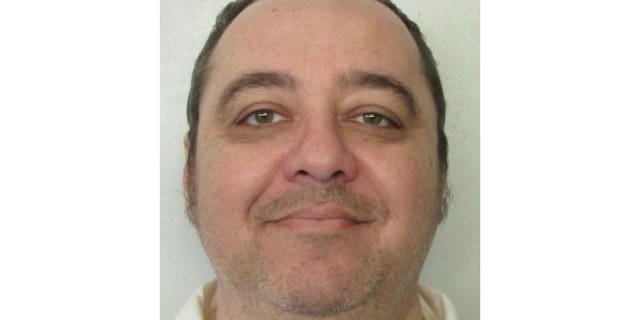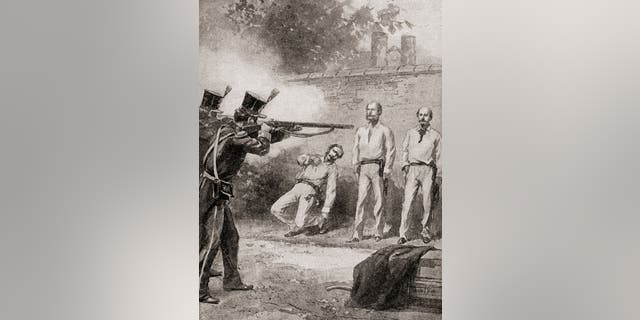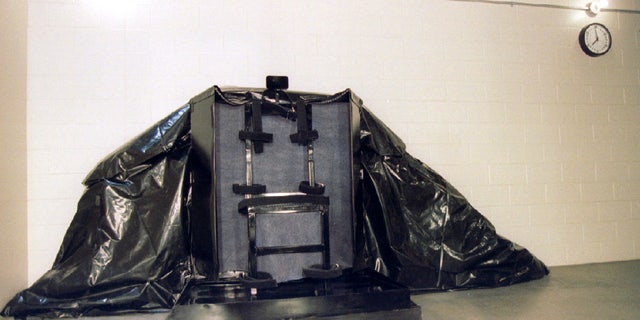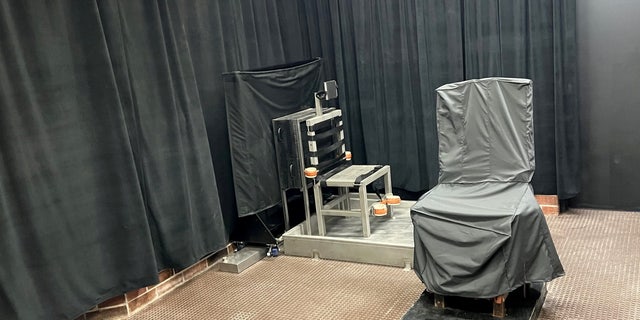Idaho’s move to resurrect firing squad ‘makes sense’ as ‘quickest, surest’ death penalty option, expert says
As Idaho looks to resurrect the firing squad as an acceptable alternative to lethal injection for prisoners sentenced to death, a shortage of necessary drugs and a poor track record over the past four decades has experts pointing out the shortcomings of the “modern” and “clinical” practice used in most states that still carry out capital punishment.
If signed into law, Idaho’s bill could impact the state’s eight current death row inmates and possibly the future of student stabbings suspect Bryan Kohberger. He could face death if convicted of any one of four first-degree murder charges he faces in the November deaths of Madison Mogen, Kaylee Goncalves, Ethan Chapin or Xana Kernodle.
“The firing squad is the quickest, surest and most error-free and the only technique for which we have skilled and trained professionals,” says Fordham Law School professor Deborah Denno, a leading expert on the death penalty in the United States.
Denno, who has studied execution methods for decades, said lethal injection procedures are in a “sorry state” even today, decades after the process became an option in the early 1980s.
IDAHO MURDERS: STATE SENATE PASSES BILL TO REINSTATE EXECUTION BY FIRING SQUAD
“Within the past few years, we’ve had three people survive lethal injection executions when they were supposed to die,” she told Fox News Digital. “And this is after over two hours of people trying to kill them and the state basically saying, ‘You’ve got to stop.'”
Executioners have had trouble accessing the veins, drugs are scarce and other things can go wrong.
It happened to Alabama death row inmate Kenneth Eugene Smith in November, the second time in that state alone in as many months.

The injection process is also shrouded in secrecy, while firing squads are, by nature, more transparent, with multiple executioners in full view of the witnesses.
While Denno supports the bill in Idaho, she suggested taking it a step further and, instead of making the firing squad an available alternative when lethal injections cannot be performed, giving death row inmates the choice between the two.
“I have a hunch that more inmates would choose firing squad,” she told Fox News Digital, noting that Tennessee inmates have begun choosing electrocution over lethal injection when given the choice.
IDAHO STUDENT MURDERS SUSPECT BRYAN KOHBERGER COULD FACE DEATH BY FIRING SQUAD UNDER PROPOSED LAW IF CONVICTED

“In Tennessee, that’s quite a statement, because electrocution has had so many horrible problems associated with it — people’s heads burning, their hair burning, eyes popping out, etc.,” she said.
It also meets the Supreme Court’s prerequisite as a “known and available alternative,” established in the landmark Glossip v. Gross case, she argues.
Denno, who has researched methods of execution for the past three decades, has written seven articles cited by the Supreme Court on the topic, according to her university bio.
BIDEN’S DOJ WILL PURSUE DEATH PENALTY FOR NYC KILLER DESPITE THE PRESIDENT’S STANCE ON CAPITAL PUNISHMENT

The researcher made clear she is not “pro-death penalty.” She’s “death penalty agnostic.”
“I just think if we’re going to be executing people, it should be done in the most humane way possible,” she said.
Only four states have an option for the firing squad, although its use is extremely rare, according to the Death Penalty Information Center, which also in December described lethal injections as the “most-botched” execution method.
Among Mississippi, Oklahoma, Utah and South Carolina, only three prisoners have been put to death by firing squad since 1976.
OKLAHOMA INMATE EXECUTED FOR 1985 SHOOTING DEATH

They all happened in Utah.
The first was Gary Gilmore, who, after an 11-year prison sentence for robbery, was released and robbed and killed a gas station clerk and motel manager in 1976. Six months later, after a hunger strike and failed appeal, he died by firing squad.
Next was John Albert Taylor, who raped and strangled an 11-year-old girl in 1989. He chose a firing squad over lethal injection because he was worried about “flipping around like a fish out of water,” The Associated Press reported at the time.

Then came Ronnie Lee Gardner in 2010. While in court for a bartender’s death, he killed a lawyer and shot a bailiff in a failed attempt to escape custody.
“That was last execution by firing squad in the U.S.,” said Matt Mangino, a former Lawrence County, Pennsylvania, district attorney who also previously sat on the state’s parole board.
He now works in private practice and wrote a book on the issue, “The Executioner’s Toll, 2010.”

“Most states that had the firing squad moved away from that form of execution because of the ‘Wild West’ mentality it portrayed,” Mangino told Fox News Digital. “Some say lethal injection is clinical or sanitary, the firing squad is ‘uncivilized.'”
But injections can be gruesome too, experts say. And while there is less visible blood, Mangino noted that one drug in the common three-drug cocktail is a paralytic meant to keep the condemned still for witnesses’ comfort, not to ease the pain of death.
“It’s unsightly and uncomfortable for witnesses to see someone gyrating and moving around as they’re going through the throes of death during lethal injection,” Mangino said.
EXECUTION OF TEXAS DEATH ROW INMATE WHO CUT OUT HIS EYES DELAYED AFTER CONCERNS ABOUT HIS MENTAL STATE

Idaho’s bill passed with a veto-proof majority, but it was not without opposition.
“This is an important bill for victims, their families and the rule of law,” the bill’s House sponsor, Rep. Bruce Skaug, R-Nampa, told Fox News Digital this week.

The bill passed the state House 50-15-5 earlier this month and the Senate 24-11 on Monday before it was sent to Gov. Brad Little’s desk.
“Upon signature of the governor, the state may now more likely carry out justice, as determined by our judicial system, against those who have committed first-degree murder,” Skaug said.
Sen. Dan Foreman, R-Moscow, argued that the people assigned to the firing squad, the witnesses and the cleanup crew are all at risk of becoming traumatized by the experience, according to The Associated Press.
However, Mangino noted, ahead of Gardner’s 2010 execution, hundreds of people volunteered to be part the firing squad.

“I don’t think people who are in law enforcement are worried about PTSD from being on a firing squad,” he said.
And as states struggle to obtain lethal injection drugs, there is no shortage of people willing to serve on a firing squad or of guns to carry out the penalty.

Still, Edwina Elcox, a Boise-based defense attorney, earlier this week called the concept of using a firing squad “atrocious.”
“Execution by way of firing squad is antiquated and, bottom line, inhumane,” she told Fox News Digital Tuesday. “It is deeply concerning that Idaho is reverting to such barbaric methods.”
But compared to the Old West’s favored method — hanging — and stacked up against lethal injections, the electric chair and other modern procedures, the firing squad is the most humane and the least prone to error, Denno argued.
STUDIES: DEATH PENALTY DISCOURAGES CRIME

In addition to a persistent scarcity of approved lethal injection drugs, the procedure is also difficult for a number of reasons, Denno said.
Condemned inmates often have vein damage due to prolonged drug use, some of them are too obese and others have too much muscle, she said. Others are so nervous their veins contract.
In some gruesome cases, executioners are forced to cut into the inmate’s neck or groin to find a place to insert the needle. At times, condemned inmates have even assisted prison personnel in inserting it themselves.
The Associated Press contributed to this report.
Read the full article Here


